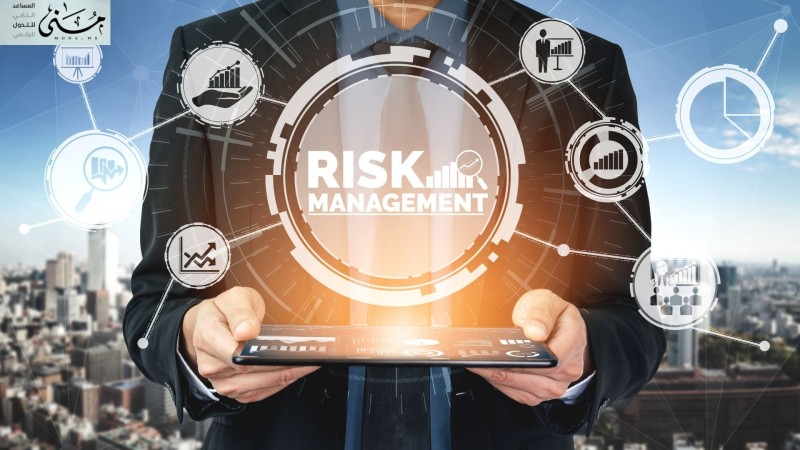At Mona News, we keep pace with technological developments and shed light on issues that shape our digital present and future.
As reliance on technology expands into every aspect of life, information security threats have become a central concern affecting individuals, institutions, and even nations.
Today, information is no longer just data — it is a digital asset, and protecting it is a vital necessity no less important than protecting a country’s physical borders.
🔍 What Are Information Security Threats?
Information security threats refer to any factors that can negatively affect the confidentiality, integrity, or availability of data.
These threats vary — human, technical, or natural — and can be either intentional or accidental.
Their danger lies in their ability to penetrate systems, leak sensitive information, disrupt services, or destroy the digital trust upon which modern institutions depend.
👥 First: Human Threats — The Weakest Link
Despite tremendous advances in digital protection and smart systems, the human factor remains the greatest and most dangerous challenge in the field of information security.
History shows that most major cyber incidents were not caused solely by technical vulnerabilities, but by a simple human error that opened the door to attackers.
According to global cybersecurity reports, between 70% and 90% of cyberattacks begin with a mistake or poor decision by an employee — often unintentionally.
Below are the most common human-related threats organizations face daily:
⚠️ Negligence or Human Error
This is the most frequent threat, often resulting from inattention or a lack of digital security awareness.
An employee may open an unfamiliar email link or download a malicious attachment without realizing it.
In that single moment, the attacker gains direct access to the organization’s network or sensitive data.
Other forms of human error include:
-
Leaving devices unlocked or unattended.
-
Sharing passwords with colleagues.
-
Using public Wi-Fi networks to access work systems.
Studies show that a cyberattack doesn’t always require advanced hacking — sometimes it only takes one careless click from an employee.
🧠 Social Engineering
Social engineering is one of the most dangerous modern forms of digital fraud because it targets the human mind rather than the system itself.
It relies on psychological manipulation, where the attacker impersonates a trusted source — such as a bank, manager, or IT support — to persuade the victim to share sensitive data or take specific actions.
Common methods include:
-
Phishing: Fake emails or websites that look legitimate.
-
Vishing: Fraudulent phone calls claiming to be from official sources.
-
IT Support Scams: Tricking staff into revealing system credentials.
The real danger lies in how these attacks exploit human trust, not software flaws.
Preventing them requires continuous training and strengthening employee cybersecurity awareness.
🔒 Insider Threats
Not all threats come from outside — sometimes they originate within the organization itself.
An employee, whether current or former, may exploit their authorized access to retrieve, misuse, or leak sensitive information — intentionally or accidentally.
Motives can include:
-
Revenge or a desire to harm the organization.
-
Financial gain or selling confidential data.
-
Weak oversight of system access permissions.
Studies indicate that around 30% of data breaches are caused by insiders or contractors.
To counter this, organizations must implement strict access control policies and conduct regular reviews of user accounts and permissions.
🧩 Lack of Security Awareness
The absence of a cybersecurity culture is one of the most dangerous non-technical threats facing institutions today.
Even with advanced security systems, a user unaware of digital safety principles can compromise the entire infrastructure.
Examples of poor awareness include:
-
Using weak or repeated passwords.
-
Ignoring software updates.
-
Sharing sensitive information on social media.
That’s why leading organizations conduct regular awareness programs, including simulated phishing attacks and interactive cybersecurity workshops to strengthen employee readiness.
In short, “Even the strongest security systems can collapse with a single untrained click.”
Investing in people is just as vital as investing in technology — because building a strong security culture is the true defense against digital threats.
This is precisely what many Saudi government and private entities are pursuing as part of their secure digital transformation journey under Vision 2030.
💻 Second: Technical Threats — The Ever-Evolving Danger
Cyberattacks evolve faster than defense technologies, making cybersecurity a constant race between attackers and defenders.
Here are the most prominent technical threats:
🦠 Malware
Malware is one of the oldest and most dangerous cyberattack tools. These are malicious programs planted inside systems to steal, destroy, or spy on data.
Types include:
-
Viruses: Spread quickly between files and networks.
-
Trojans: Appear harmless but open “backdoors” for hackers.
-
Spyware: Secretly monitors users to collect sensitive information.
-
Worms: Self-replicating programs that spread automatically across networks.
Their danger lies in their ability to remain undetected for long periods, allowing attackers to gather detailed information or use infected devices for larger attacks.
Major incidents like WannaCry and NotPetya have infected thousands of systems globally, paralyzing both public and private institutions.
💰 Ransomware
Ransomware is among the most severe and costly cyber threats today.
It encrypts files or entire systems, demanding a ransom — often in cryptocurrency — to restore access.
These attacks can instantly halt critical operations, forcing organizations, hospitals, and government entities to shut down entirely.
For instance, a 2023 ransomware attack on a European healthcare network disrupted medical services for thousands of patients, prompting governments to invest heavily in preventive security.
The danger extends beyond data encryption; attackers often threaten to publicly leak stolen data if the ransom is not paid.
📧 Phishing Attacks
Phishing is one of the most widespread cyber threats, exploiting human weaknesses instead of technical flaws.
Attackers send fake emails or create websites that mimic legitimate institutions to steal login credentials or financial data.
With the rise of AI, phishing has become more sophisticated and personalized, using names, languages, and details that make fake messages almost indistinguishable from real ones.
Experts warn that over 80% of breaches begin with a successful phishing attempt, highlighting the need for employee awareness and training as the first line of defense.
🧩 System Vulnerabilities
System vulnerabilities are weaknesses in software or configurations that hackers exploit to gain access.
They often result from coding errors, misconfigured systems, or outdated security patches.
Some are exploited in what is known as “zero-day attacks”, occurring before developers can release a fix.
Organizations that delay updates or lack proper maintenance policies are the most at risk.
Regular patching and immediate security updates remain among the most effective protective measures.
🌐 Distributed Denial-of-Service (DDoS) Attacks
DDoS attacks are among the most disruptive threats targeting websites and online services.
They overwhelm servers with massive volumes of requests, causing systems to slow down or crash entirely.
Such attacks are often aimed at government websites, financial institutions, or major media platforms.
Recent DDoS incidents have exceeded terabytes of data per second, fueled by massive networks of infected devices known as botnets.
With the spread of the Internet of Things (IoT), hackers can now exploit smart home devices — such as cameras and routers — without their owners’ knowledge.
📊 Escalating Risks by the Numbers
Recent cybersecurity reports reveal that over 60% of organizations worldwide faced at least one attempted breach last year, with the average cost of an attack exceeding $4 million.
These figures highlight that technical threats are no longer hypothetical — they are a daily reality requiring constant vigilance and continuous investment in cybersecurity.
🧱 Third: Organizational and Administrative Threats
Not all threats are digital; some stem from poor information security management within institutions.
The most common include:
-
Lack of clear security policies defining roles and responsibilities.
-
Failure to update systems and software regularly.
-
Weak data backup or absence of disaster recovery plans.
-
Neglecting security audits and compliance with standards such as ISO 27001.
Even organizations equipped with modern technology remain vulnerable if they lack proper governance and cybersecurity frameworks.
🌪️ Fourth: Natural and Environmental Threats
Although less frequent, these threats can be devastating if unprepared for:
-
Natural disasters such as fires, floods, and earthquakes that damage servers or data centers.
-
Power outages or hardware failures.
-
Cloud storage errors caused by technical malfunctions or misconfigurations.
For this reason, organizations rely on redundant data centers and geographically distributed backups to ensure business continuity in the event of disaster.
🧠 How to Confront These Threats
There is no single solution — only an integrated strategy that includes:
-
Developing clear information security policies aligned with organizational goals.
-
Continuous awareness and training programs for all employees.
-
Implementing advanced technologies like encryption and multi-factor authentication.
-
Monitoring and analyzing digital activities using AI for early threat detection.
-
Conducting regular penetration tests to identify vulnerabilities.
-
Establishing rapid incident response and recovery plans.
🇸🇦 Saudi Arabia: A Global Leader in Cybersecurity
Saudi Arabia has emerged as a global leader in cybersecurity through the efforts of the National Cybersecurity Authority (NCA), which established strict frameworks and policies to protect the national digital space.
Key initiatives include:
-
The National Cybersecurity Strategy.
-
The Cyber Emergency Response Center (CERT).
-
Training and capacity-building programs for Saudi cybersecurity professionals.
These initiatives have made the Kingdom a regional and global model in building a safe, advanced digital ecosystem that supports the comprehensive digital transformation under Vision 2030.
✍️ In Conclusion
Information security threats are not just technical problems — they are national and societal challenges that require awareness, cooperation, and readiness.
In a world where data is the new wealth, protecting it is the first line of defense for economies, security, and digital sovereignty.









Comments
Add New Comment